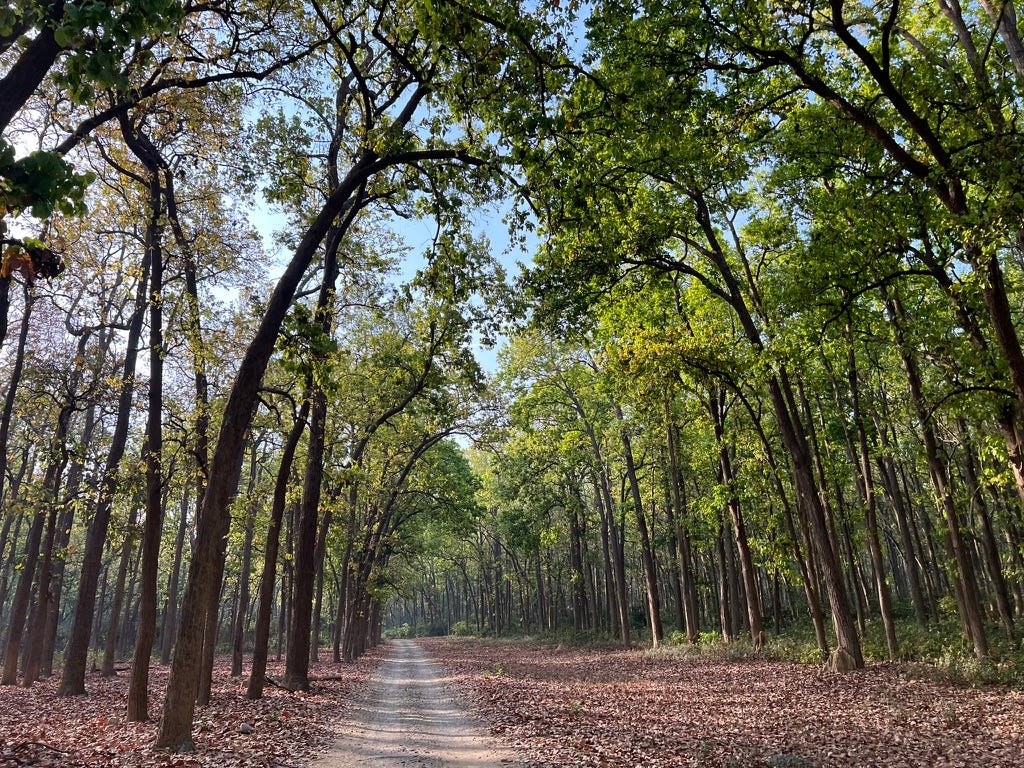The Endless Cycle of Chasing and Frustration in Wildlife Photography
Core Concepts
The relentless pursuit of capturing the perfect wildlife photograph often leads to a cycle of momentary satisfaction and lingering frustration, as photographers become consumed by the desire for more and more.
Abstract
The content describes the experience of wildlife photographers chasing after tigers in the hopes of capturing the perfect shot. Initially, the photographers are excited when they spot the tiger and believe they have accomplished their mission. However, this happiness is short-lived, as the tiger disappears, and the photographers are left wanting more.
The content suggests that the photographers become so consumed by their desire to capture the perfect image that they fail to appreciate the beauty of the surrounding environment. They continue to search tirelessly, driven by their quest for the ultimate shot, but this only leads to further frustration.
The content also highlights the contrast between the tranquility of the natural world and the "fog of acquisitiveness" that clouds the photographers' minds. While the sun eventually lifts the mist, revealing the beauty of the jungle, the photographers remain focused on their relentless pursuit, unable to fully immerse themselves in the present moment.
The content suggests that the photographers' obsession with capturing the perfect shot has blinded them to the inherent beauty and wonder of the natural world around them, leading to a cycle of chasing and frustration that is difficult to break.
Chasing..frustration..more chasing success..chasing more..frustration!
Stats
The photographers return back to the room hoping to shoot better [still more?] shots next morning.
The morning starts with new aspirations and a quest to have more and more.
Quotes
"The tigress has to feed her kids…. has not hunted for a while"
'Be watchful. We need to follow their movements.'
Key Insights Distilled From
by Suchitra Meh... at medium.com 05-15-2024
https://medium.com/@suchitraonco/chasing-frustration-more-chasing-success-chasing-more-frustration-72103ef3e5c6
Deeper Inquiries
How can wildlife photographers find a balance between their pursuit of the perfect shot and their appreciation for the natural world
Wildlife photographers can find a balance between their pursuit of the perfect shot and their appreciation for the natural world by practicing ethical photography. This involves respecting the wildlife and their habitats, maintaining a safe distance to avoid causing stress or disturbance, and prioritizing the well-being of the animals over getting the shot. Additionally, photographers can take the time to observe and understand the behavior of the wildlife they are capturing, which can lead to more meaningful and authentic photographs. By developing a deep connection with the natural world and fostering a sense of stewardship, photographers can enhance their appreciation for the beauty and diversity of wildlife while still striving for that perfect shot.
What are the potential negative impacts of this cycle of chasing and frustration on the well-being of the photographers and the wildlife they seek to capture
The cycle of chasing and frustration in wildlife photography can have negative impacts on both the well-being of the photographers and the wildlife they seek to capture. For photographers, constantly chasing after the perfect shot can lead to burnout, stress, and a sense of dissatisfaction. This relentless pursuit may also result in unethical practices such as disturbing the animals or their habitats in order to get the desired image. On the other hand, the wildlife may experience increased stress and disruption from the presence of photographers, impacting their natural behavior and well-being. This cycle can create a harmful environment for both the photographers and the wildlife, ultimately detracting from the true essence of wildlife photography.
How might a shift in perspective, from capturing the perfect image to simply experiencing and connecting with the natural world, lead to more fulfilling and sustainable wildlife photography practices
A shift in perspective from capturing the perfect image to simply experiencing and connecting with the natural world can lead to more fulfilling and sustainable wildlife photography practices. By focusing on the beauty and wonder of the natural world, photographers can develop a deeper appreciation for the wildlife and their habitats. This shift allows photographers to immerse themselves in the environment, observe the intricate details of nature, and capture moments that reflect the true essence of wildlife. Embracing this perspective not only leads to more authentic and meaningful photographs but also promotes a sense of harmony and respect for the natural world. By prioritizing the experience of being in nature and forming a genuine connection with the wildlife, photographers can create images that convey a sense of awe and reverence, contributing to a more sustainable approach to wildlife photography.
0
